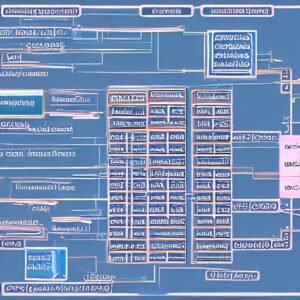Introduction
SystemVerilog is a hardware description and verification language widely used in the design and verification of digital systems. One of the key elements in SystemVerilog programming is the use of conditional statements, and among them, the “if-else” construct plays a pivotal role.
In this comprehensive guide, we will delve into the intricacies of using if-else statements in SystemVerilog, exploring their syntax, applications, and best practices.
Understanding the Basics of SystemVerilog If-Else Statements
At its core, the if-else statement in SystemVerilog allows designers and verification engineers to create decision-making structures within their code. The basic syntax is straightforward:
| systemverilog Copy code if (condition) // Code to be executed if the condition is true else // Code to be executed if the condition is false |
This fundamental structure enables the creation of flexible and robust code, especially in scenarios where different actions are required based on varying conditions.
Conditional Expressions in SystemVerilog
SystemVerilog supports a range of conditional expressions within if-else statements. These include logical comparisons, equality checks, and relational operators. Here’s a brief overview:
Logical Comparisons:
| systemverilog Copy code if (a && b) // true if both a and b are true if (x || y) // true if either x or y is true if (!z) // true if z is false |
Equality Checks:
| systemverilog Copy code if (value == expected_value) // true if value is equal to expected_value if (result != ERROR) // true if result is not equal to ERROR |
Relational Operators:
| systemverilog Copy code if (count > MAX_COUNT) // true if count is greater than MAX_COUNT if (time <= TIMEOUT_THRESHOLD) // true if time is less than or equal to TIMEOUT_THRESHOLD |
These expressions provide the foundation for creating powerful conditions that drive the flow of your SystemVerilog code.
Nested If-Else Statements
To handle more complex decision-making scenarios, SystemVerilog allows for the nesting of if-else statements. This involves placing one if-else construct within another. Consider the following example:
| systemverilog Copy code if (condition1) if (condition2) // Code to be executed if both conditions are true else // Code to be executed if condition1 is true but condition2 is false else // Code to be executed if condition1 is false |
While nesting can provide flexibility, it’s essential to maintain code readability and avoid excessive nesting, which can lead to code that is difficult to understand and maintain.
The Ternary Operator in SystemVerilog
SystemVerilog supports the ternary operator, a concise way to express conditional statements in a single line. The syntax is as follows:
| systemverilog Copy code variable = (condition) ? true_value : false_value; |
This operator is particularly useful when assigning values based on a condition, reducing the need for verbose if-else constructs.
| systemverilog Copy code result = (status == SUCCESS) ? “Operation successful” : “Operation failed”; |
Error Handling with SystemVerilog If-Else Statements
In hardware design and verification, error handling is a critical aspect of ensuring the robustness of the system. SystemVerilog’s if-else statements can be instrumental in implementing effective error-handling mechanisms.
| systemverilog Copy code if (error_condition) begin $display(“Error: %s”, error_message); $stop; end else // Continue with normal execution |
In this example, if the error_condition is true, the code within the “if” block will be executed, displaying an error message and stopping the simulation. Otherwise, the program will continue its normal execution.
Best Practices for Using If-Else Statements in SystemVerilog
Code Readability:
Write clear and concise conditions to enhance code readability. Meaningful variable names and comments can also contribute to code understanding.
Avoiding Over-Nesting:
While nesting is a powerful feature, avoid excessive nesting to prevent code complexity. Consider using functions or procedural blocks to encapsulate complex conditions.
Consistent Indentation:
Maintain consistent indentation to visually represent the code structure. This makes it easier for developers to follow the logic of the program.
Error Handling:
Implement robust error-handling mechanisms using if-else statements to catch unexpected conditions and provide meaningful feedback.
Use of Ternary Operator:
Consider using the ternary operator for simple conditional assignments, as it can enhance code conciseness without sacrificing readability.
Conclusion
Mastering the use of if-else statements in SystemVerilog is fundamental to writing efficient, readable, and error-resistant code. Whether you’re designing digital systems or verifying their functionality, the ability to make decisions based on conditions is a key skill.
By understanding the syntax, exploring various conditional expressions, and applying best practices, you can elevate your SystemVerilog programming to new heights. As you continue to explore the language, experiment with different scenarios, and incorporate these principles into your coding practices, you’ll be well on your way to becoming a proficient SystemVerilog developer.












